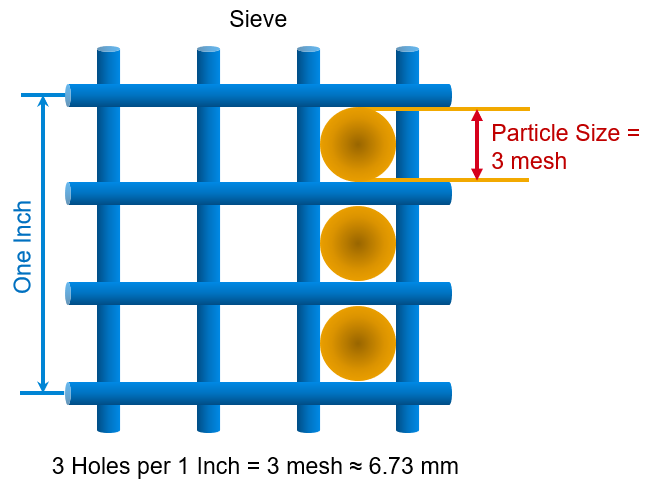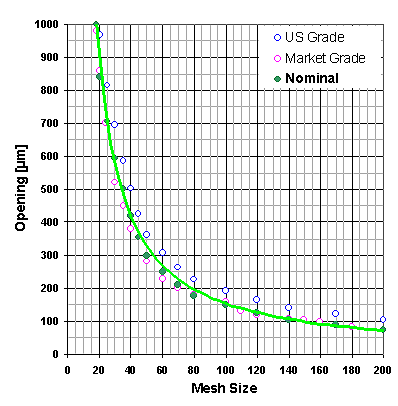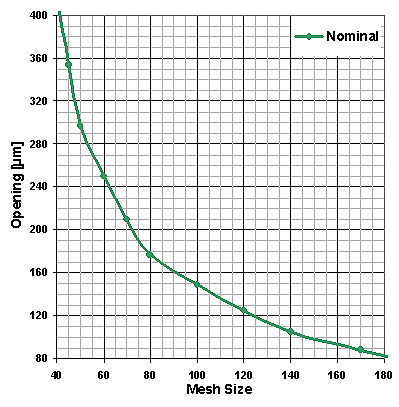Mesh Size is the number of adjacent holes in one inch length of a sieve:

Mesh Size/Opening Reference Table and Diagram
|

|
|||||||||||||||||||||||||||||||||||||||||||||||||||||||||||||||||||||||||||||||||||||||||||||||||||||||||||||||||||||||||||||||||||||||||||||||||||||||||||||||
Mesh/Micrometer Calculator (only defined between 30 - 140 mesh, 75 - 600 µm)
Expected Flow for Packed Columns
| Internal Diameter | Mesh Size Columns shorter than 3 m |
Mesh Size Columns longer than 3 m |
Expected N2 Flow [mL/min] |
Expected H2/He Flow [mL/min] |
|---|---|---|---|---|
| 2 mm | 100 - 120 | 80 - 100 | 8 - 15 | 15 - 30 |
| 3 mm | 100 - 120 | 80 - 100 | 15 - 30 | 30 - 60 |
| 4 mm | 80 - 100 | 60 - 80 | 30 - 60 | 60 - 100 |

